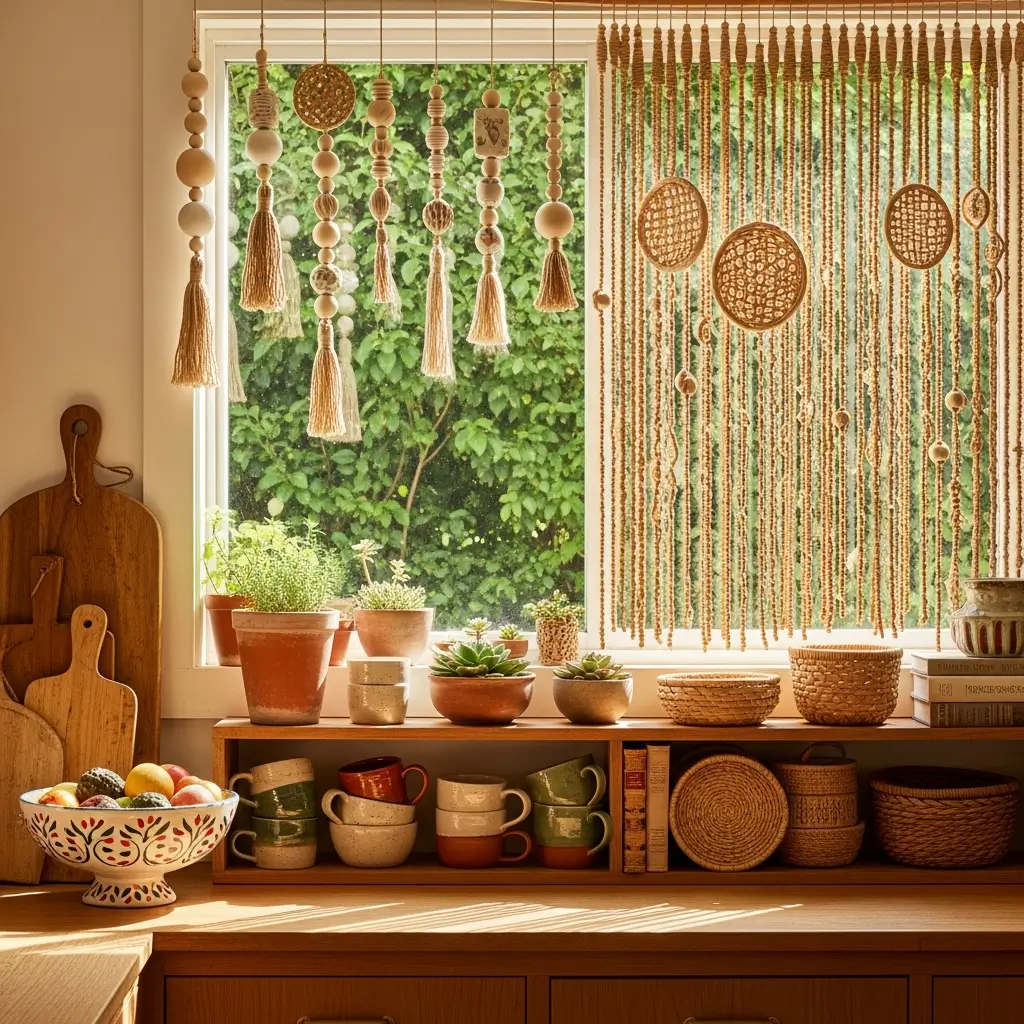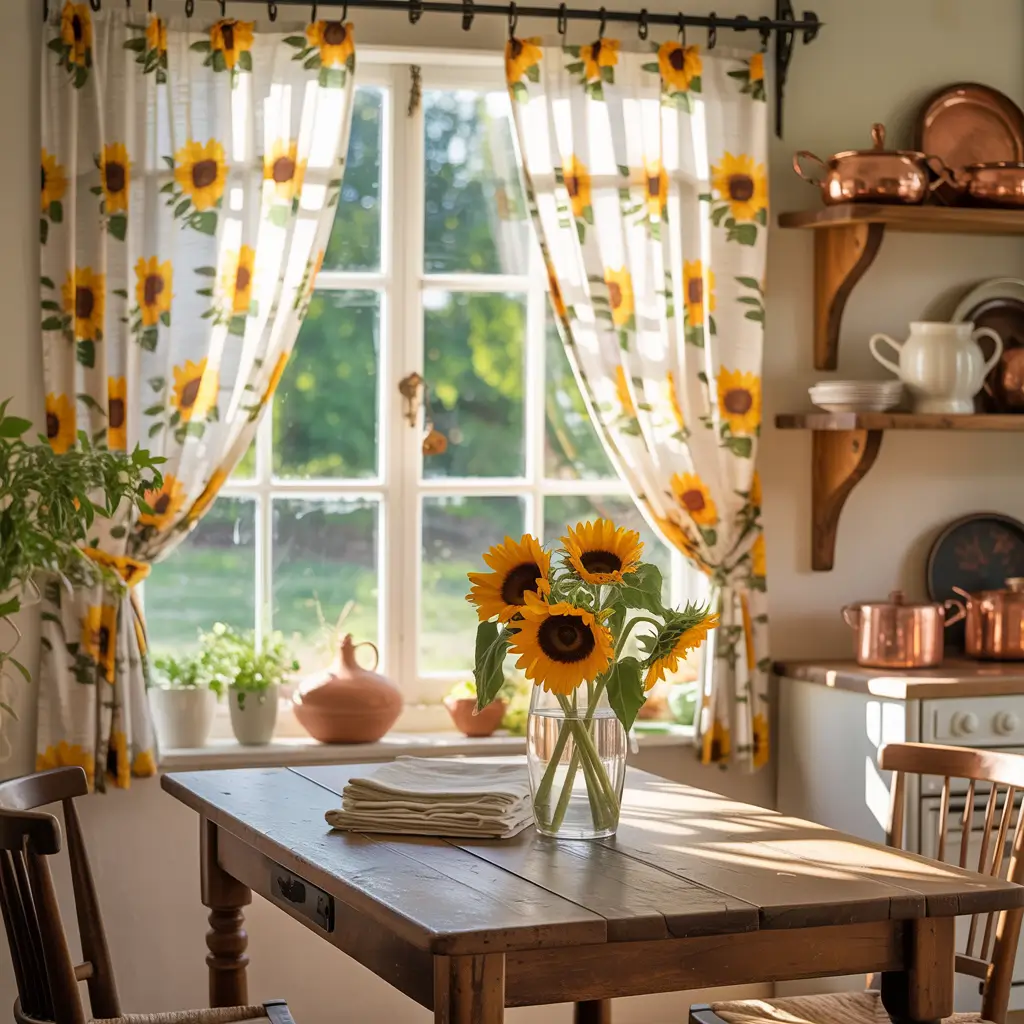15 Cozy Semi Open Kitchen and Living Room Ideas for Comfort
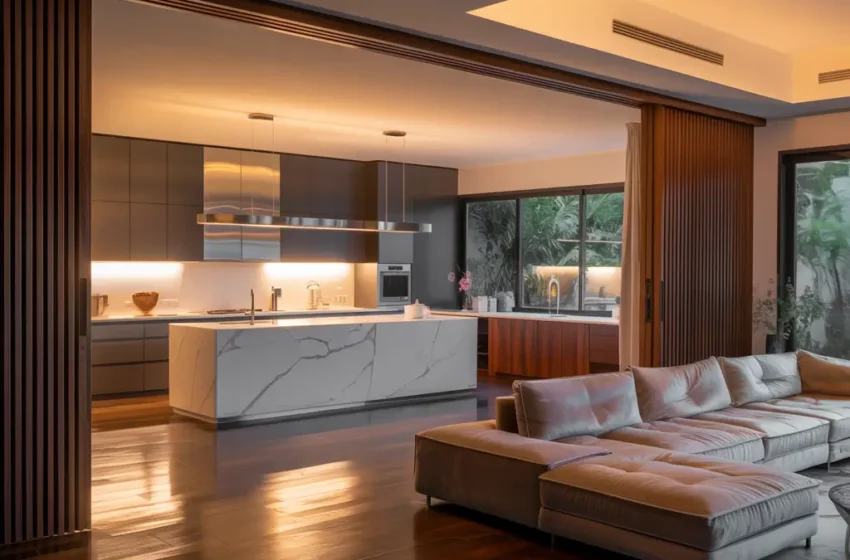
Owala FreeSip Insulated Stainless Steel Water Bottle with Straw, BPA-Free Sports Water Bottle, Great for Travel, 24 Oz, Denim
$29.99 (as of November 11, 2025 16:12 GMT +00:00 - More infoProduct prices and availability are accurate as of the date/time indicated and are subject to change. Any price and availability information displayed on [relevant Amazon Site(s), as applicable] at the time of purchase will apply to the purchase of this product.)STANLEY Quencher H2.0 Tumbler with Handle and Straw 40 oz | Flowstate 3-Position Lid | Cup Holder Compatible for Travel | Insulated Stainless Steel Cup | BPA-Free | Plum
$26.55 (as of November 11, 2025 16:12 GMT +00:00 - More infoProduct prices and availability are accurate as of the date/time indicated and are subject to change. Any price and availability information displayed on [relevant Amazon Site(s), as applicable] at the time of purchase will apply to the purchase of this product.)Rubbermaid Brilliance Food Storage Containers BPA Free Airtight Lids Ideal for Lunch Meal Prep & Leftovers Set of 5 (3.2 Cup)
$27.99 (as of November 11, 2025 16:12 GMT +00:00 - More infoProduct prices and availability are accurate as of the date/time indicated and are subject to change. Any price and availability information displayed on [relevant Amazon Site(s), as applicable] at the time of purchase will apply to the purchase of this product.)Etekcity Food Kitchen Scale, Digital Grams and Ounces for Weight Loss, Baking, Cooking, Keto and Meal Prep, LCD Display, Medium, 304 Stainless Steel
$13.99 (as of November 11, 2025 16:12 GMT +00:00 - More infoProduct prices and availability are accurate as of the date/time indicated and are subject to change. Any price and availability information displayed on [relevant Amazon Site(s), as applicable] at the time of purchase will apply to the purchase of this product.)Alpha Grillers Meat Thermometer Digital - Instant Read Food Thermometer for Cooking and Grilling Stocking Stuffers for Men Christmas Gifts for Men
$13.58 (as of November 11, 2025 16:12 GMT +00:00 - More infoProduct prices and availability are accurate as of the date/time indicated and are subject to change. Any price and availability information displayed on [relevant Amazon Site(s), as applicable] at the time of purchase will apply to the purchase of this product.)Crock-Pot 7 Quart Oval Manual Slow Cooker, Stainless Steel (SCV700-S-BR), Versatile Cookware for Large Families or Entertaining
$47.99 (as of November 11, 2025 16:12 GMT +00:00 - More infoProduct prices and availability are accurate as of the date/time indicated and are subject to change. Any price and availability information displayed on [relevant Amazon Site(s), as applicable] at the time of purchase will apply to the purchase of this product.)KitchenAid Classic Multifunction Can Opener and Bottle Opener Easy to Use, Razor Sharp Stainless Steel Cutting Wheel, Soft Ergonomic Handles, Black
$14.35 (as of November 11, 2025 16:12 GMT +00:00 - More infoProduct prices and availability are accurate as of the date/time indicated and are subject to change. Any price and availability information displayed on [relevant Amazon Site(s), as applicable] at the time of purchase will apply to the purchase of this product.)Owala SmoothSip Slider Insulated Stainless Steel Coffee Tumbler, Reusable Iced Coffee Cup, Hot Coffee Travel Mug, BPA Free 12 oz, Vanilla Bean
$24.99 (as of November 11, 2025 16:12 GMT +00:00 - More infoProduct prices and availability are accurate as of the date/time indicated and are subject to change. Any price and availability information displayed on [relevant Amazon Site(s), as applicable] at the time of purchase will apply to the purchase of this product.)HydroJug Traveler - 32 oz Water Bottle with Handle & Flip Straw - Fits in Cup Holder, Leak Resistant Tumbler-Reusable Insulated Stainless Steel & Rubber Base - Gifts for Women & Men, Pink Sand
$34.99 (as of November 11, 2025 16:12 GMT +00:00 - More infoProduct prices and availability are accurate as of the date/time indicated and are subject to change. Any price and availability information displayed on [relevant Amazon Site(s), as applicable] at the time of purchase will apply to the purchase of this product.)ThermoPro TP19H Digital Meat Thermometer for Cooking with Ambidextrous Backlit and Motion Sensing Kitchen Cooking Food Thermometer for BBQ Grill Smoker Oil Fry Candy Instant Read Thermometer
$16.99 (as of November 11, 2025 16:12 GMT +00:00 - More infoProduct prices and availability are accurate as of the date/time indicated and are subject to change. Any price and availability information displayed on [relevant Amazon Site(s), as applicable] at the time of purchase will apply to the purchase of this product.)You know that moment when you’re cooking dinner and feel completely cut off from everyone else having fun in the living room?
But then you also remember that time you went full open-plan and your entire house smelled like fried fish for three days? Yeah, I’ve been there, done that, and bought the air freshener multipack.
Semi open kitchens are the goldilocks solution nobody talks about enough. They give you connection without complete exposure, like having a conversation through a slightly open door – you’re involved but not totally vulnerable.
After living with both extremes and finally landing on a semi-open design that actually works, I’m convinced this is what most of us really need.
These fifteen ideas will show you how to create that perfect balance between “come chat while I cook” and “please don’t see this disaster zone.”
Each one solves different problems while keeping your kitchen and living room in happy harmony.
Modern Semi Open Kitchen with Glass Partition
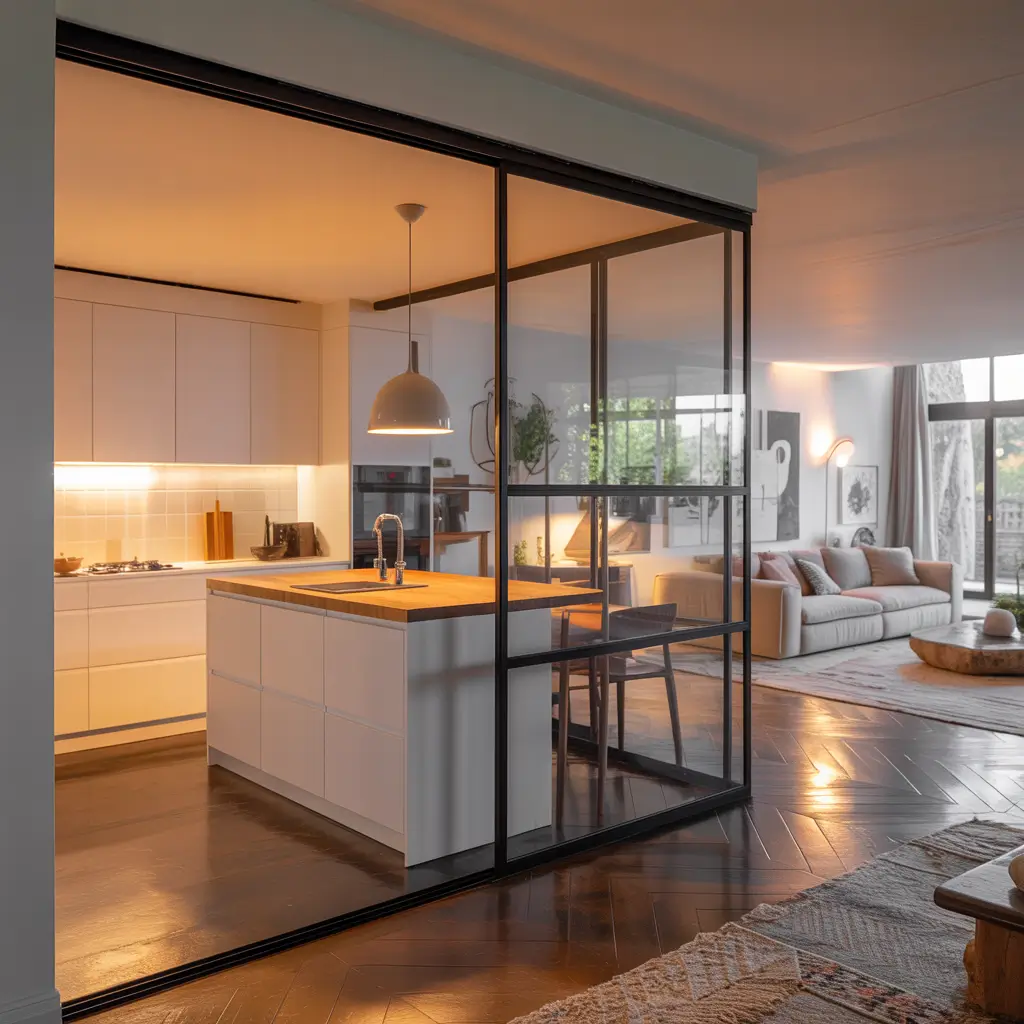
Glass partitions are having a serious moment, and honestly, they deserve it. These transparent dividers maintain visual connection while creating actual separation between your kitchen chaos and living room zen. I installed one last year after getting tired of grease splatters reaching my sofa, and it’s been a game-changer.
The modern approach uses minimal frames – sometimes just top and bottom tracks with no visible sides. This creates an almost floating effect that looks incredibly sophisticated. My glass partition runs from counter to ceiling, leaving the bottom open for that breakfast bar feel while protecting the living area from cooking mayhem.
What makes modern glass partitions work:
- Ultra-clear glass eliminates that green tint
- Black or brass frames add architectural interest
- Sliding options save space
- Can incorporate smart glass that frosts on demand
- Easy to clean (theoretically, anyway)
The best part? Natural light flows freely between spaces, so neither room feels dark or cramped. Sure, you’ll become intimately familiar with glass cleaner, but the elegance and functionality make it worthwhile.
Cozy Wooden Divider for Semi Open Layout
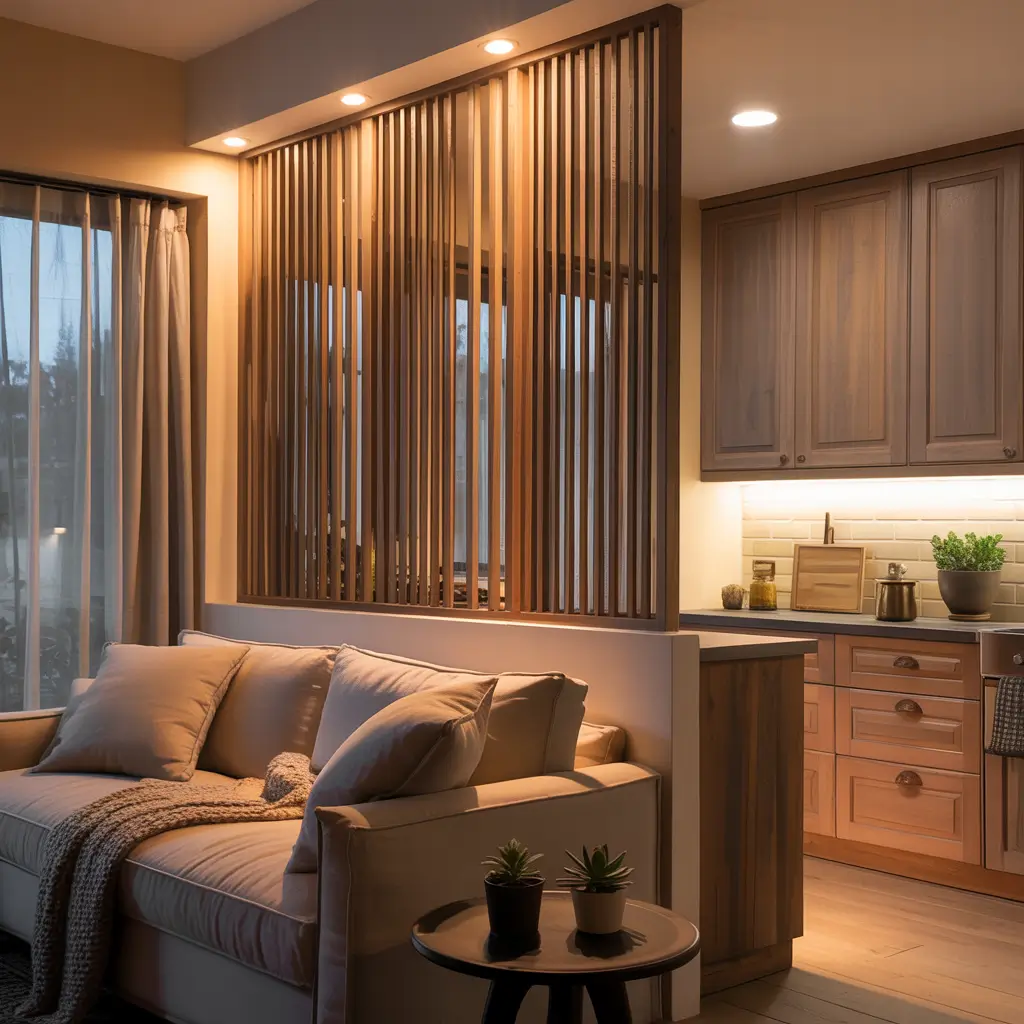
Wooden dividers bring warmth that glass and metal just can’t match. These natural barriers create separation while adding that organic, homey feel everyone craves. My neighbor installed a slatted wood divider, and now their modern apartment feels like a cozy cabin retreat.
The wood options are endless – vertical slats, horizontal planks, geometric patterns, or even live-edge panels for that rustic vibe. I personally love the Scandinavian-inspired vertical slat design that lets light and air flow through while still defining distinct spaces.
Wooden divider benefits that matter:
- Natural sound absorption (goodbye echo chamber)
- Can be stained or painted to match any style
- Adds textural interest to flat walls
- Works as a display area for hanging plants
- Ages beautifully over time
The maintenance is surprisingly minimal. A quick dust and occasional oil treatment keep the wood looking fresh. Plus, unlike glass, wood is forgiving – those inevitable dings and scratches just add character.
Minimalist Semi Open Kitchen and Living Room
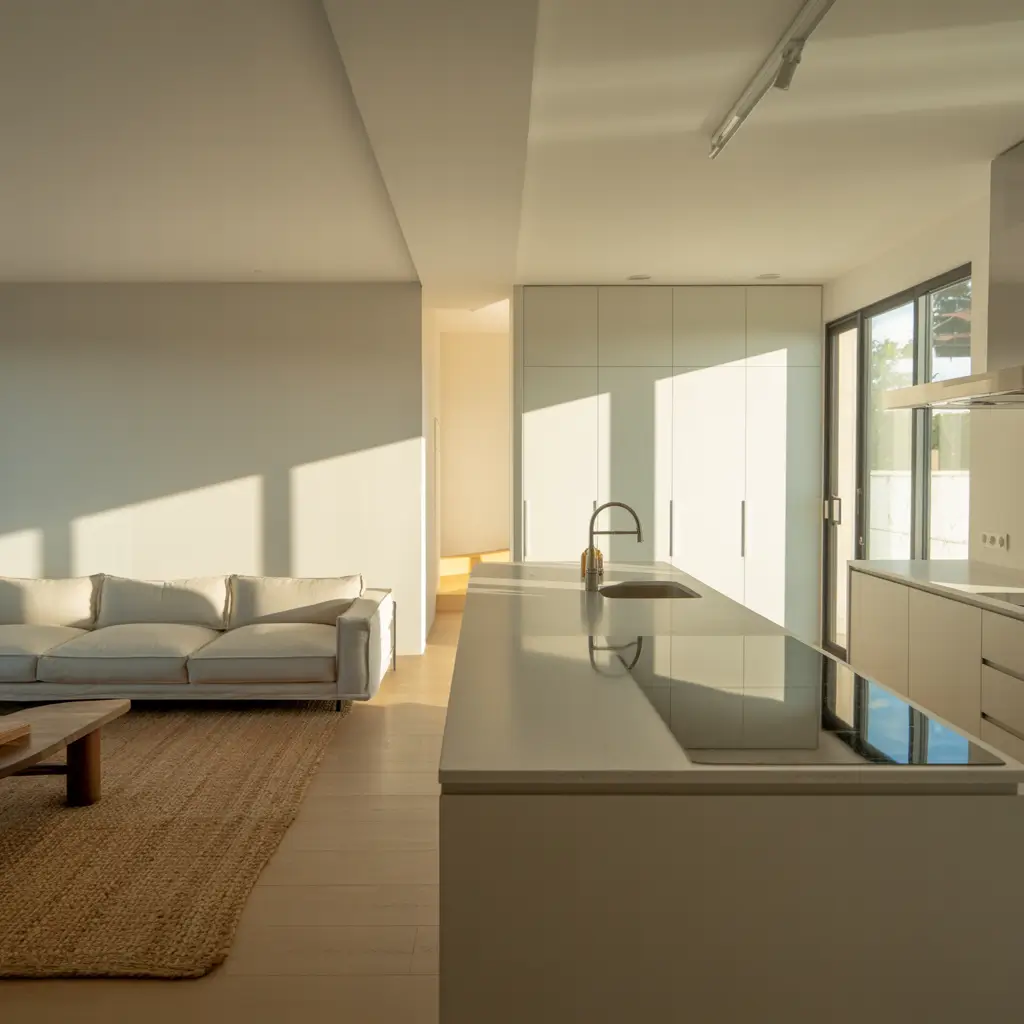
Minimalism in semi-open spaces requires serious discipline, but the payoff is incredible. Every element serves a purpose, creating calm, uncluttered zones that feel larger than they actually are. I went minimalist after realizing my “decorative” items were just expensive dust collectors.
The key lies in integrated storage and invisible boundaries. My kitchen peninsula looks like a simple white box from the living room side, but open it up and there’s storage for days. The separation is subtle – maybe just a change in flooring or ceiling height – but psychologically powerful.
Minimalist strategies that actually work:
- Monochromatic color schemes unify spaces
- Hidden storage behind every surface
- One statement piece maximum per zone
- Negative space as a design element
- Quality materials over quantity
This approach forced me to be ruthless about possessions. That bread maker used twice a year? Gone. The “good” dishes saved for occasions that never happen? Donated. What remains actually gets used and appreciated.
Also Read: 12 Inspiring Half Open Kitchen Ideas and Cozy Dining Spaces
Floating Shelves to Separate Kitchen and Living Area

Floating shelves as dividers are genius – they provide separation and storage without blocking light or views. I installed three levels of thick oak shelves between my kitchen and living room, and they’ve become both functional storage and an ever-changing art installation.
The trick is styling them thoughtfully. Kitchen side holds everyday dishes and glasses (the pretty ones, obviously), while the living room side displays books, plants, and that pottery I swore I’d never buy but couldn’t resist. The open design means both rooms benefit from the display.
Floating shelf divider essentials:
- Sturdy brackets rated for actual weight
- Varying shelf depths for visual interest
- Mix of functional and decorative items
- Strategic lighting from above or below
- Leave breathing room – don’t pack them full
My shelves forced me to upgrade my dishware game. When everything’s on display, those mismatched college plates just won’t cut it anymore.
Semi Open Kitchen with Breakfast Bar

Breakfast bars are the Swiss Army knives of semi-open designs. They divide, they seat, they store, they serve – basically everything but cook the meal for you. My breakfast bar has become the most-used spot in my entire home.
The height is crucial – standard bar height (42 inches) creates enough visual barrier to hide counter mess while keeping conversation flowing. I extended mine 14 inches on the living room side for comfortable seating, with waterfall edges that make it look way more expensive than it was.
Breakfast bar must-haves:
- Proper knee clearance (nobody likes bruised knees)
- Electrical outlets for devices
- Mixed materials for visual interest
- Storage accessible from both sides
- Good lighting for tasks and ambiance
FYI, the breakfast bar killed my formal dining room’s relevance. We eat every meal there now, and I’m not mad about it.
Elegant Semi Open Layout with Sliding Panels

Sliding panels offer flexibility that fixed dividers can’t match. Open them for parties, close them for focused cooking – it’s like having multiple room configurations in one space. I chose barn-door style panels, and yes, I slide them dramatically every single time.
The elegance comes from materials and hardware quality. My panels feature frosted glass inserts in walnut frames, running on brushed brass tracks. They’re functional art that happens to solve the open-versus-closed dilemma perfectly.
Sliding panel advantages:
- Complete flexibility in space usage
- Can be decorative when open
- Various material combinations possible
- No floor space needed for swing clearance
- Sound dampening when closed
The installation cost more than expected, but the daily satisfaction of sliding those panels based on my mood? Priceless.
Also Read: 10 Beautiful Modern Open Kitchen Ideas and Chic Details
Open Concept with Partial Wall Kitchen Design
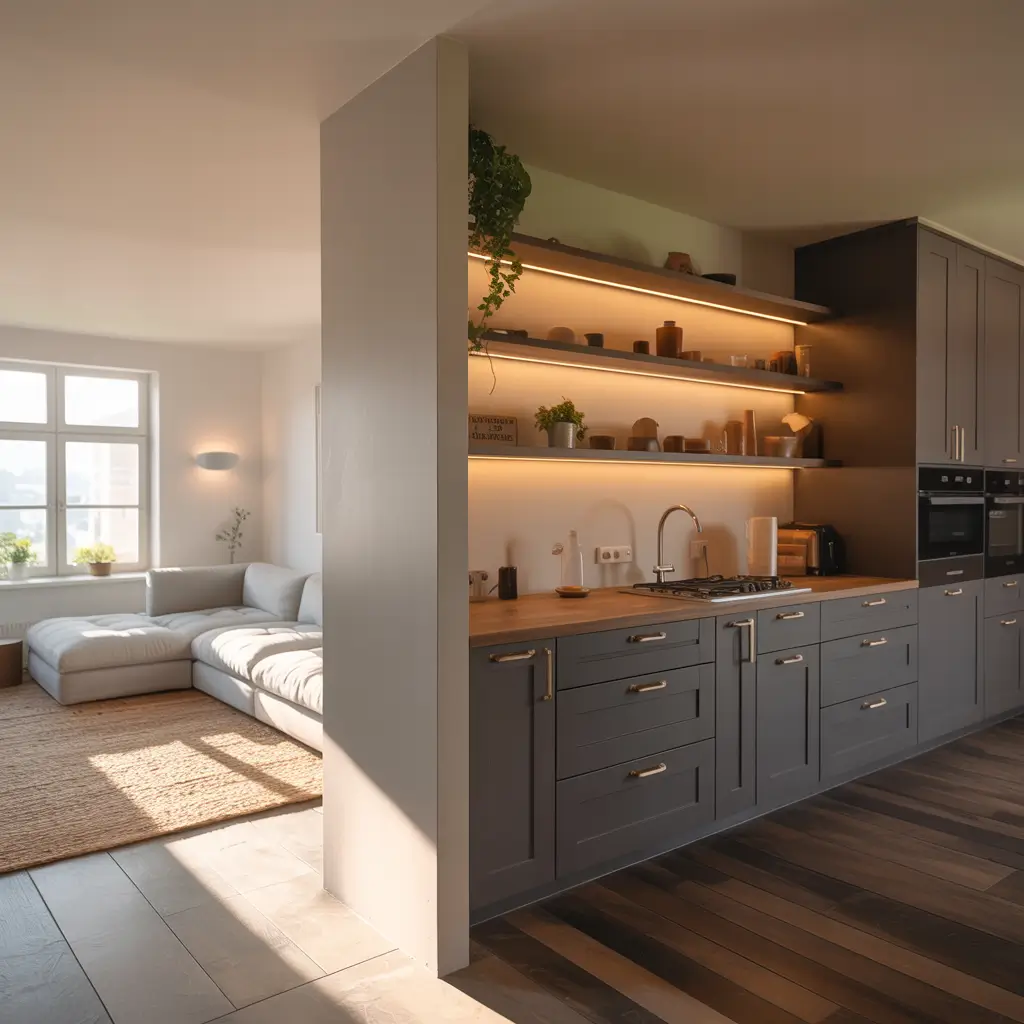
Partial walls create defined zones without full separation. These half-height barriers hide kitchen mess while maintaining spacious feel. My partial wall extends just 4 feet from the main wall, creating a natural boundary that doesn’t feel restrictive.
The top of the partial wall becomes bonus counter space – perfect for serving during parties or displaying that KitchenAid mixer you’re too proud to hide. Mine incorporates storage on both sides, maximizing every square inch of that wall.
Partial wall design strategies:
- Double-sided functionality is essential
- Consider electrical outlets on both sides
- Top surface as additional counter/bar space
- Can incorporate columns for architectural interest
- Paint or finish to either blend or contrast
The partial wall solved my biggest issue – where to put the TV. Mounted on the living room side, it’s perfectly positioned without dominating the kitchen view.
Semi Open Kitchen with Indoor Plants Divider
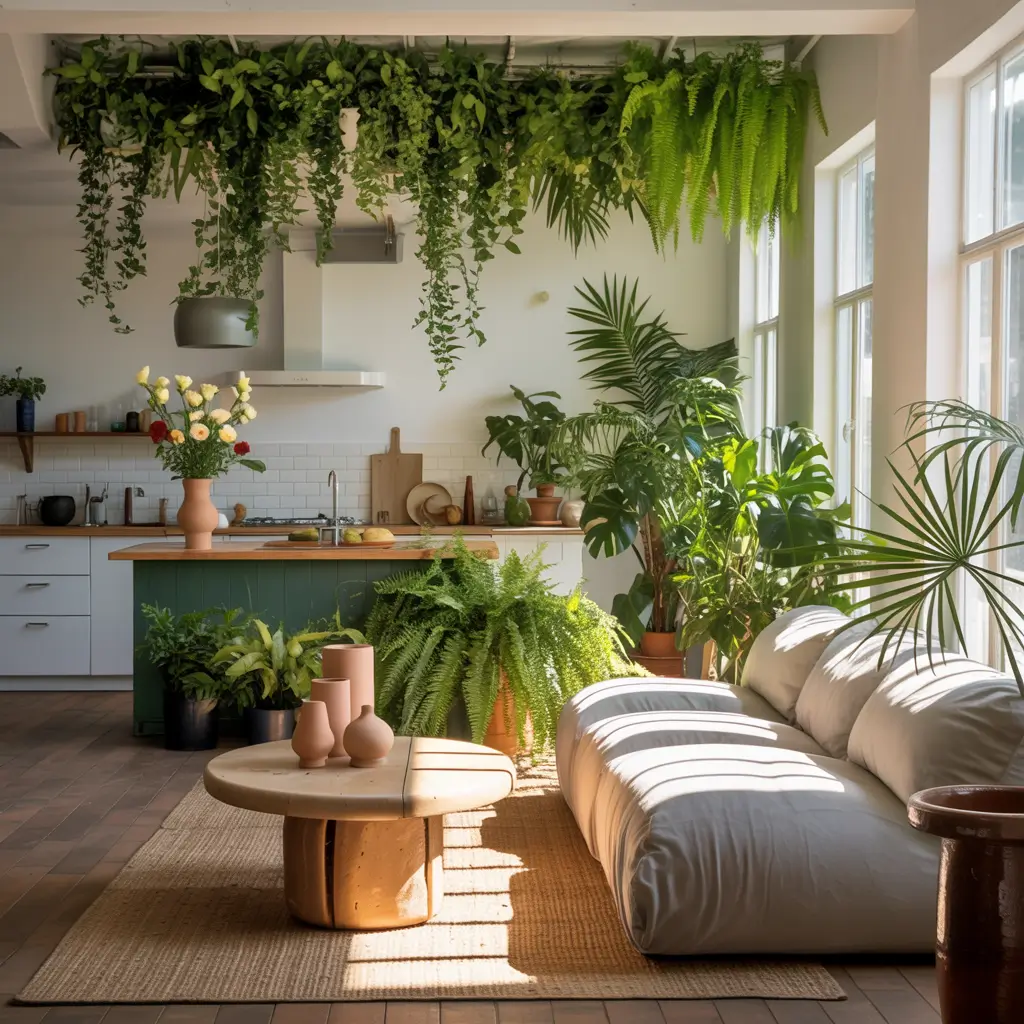
Plant dividers are living art that grows more beautiful over time. These green screens filter air, add humidity, and create organic separation that changes with seasons. My plant wall started with three pothos and has evolved into a jungle that makes me feel like a domestic goddess.
I built a simple wooden frame with multiple levels for plants at different heights. Trailing varieties cascade down while upright plants add structure. The key is choosing plants that thrive in your specific light conditions – learned that the expensive, dead way.
Plant divider success factors:
- Choose low-maintenance varieties for sanity
- Install drip trays to protect floors
- Mix textures and heights for interest
- Consider self-watering systems
- Include herbs for practical benefits
The maintenance commitment is real, but watching your divider literally bloom while purifying your air? Worth every minute of plant parent duty 🙂
Compact Semi Open Kitchen for Small Spaces
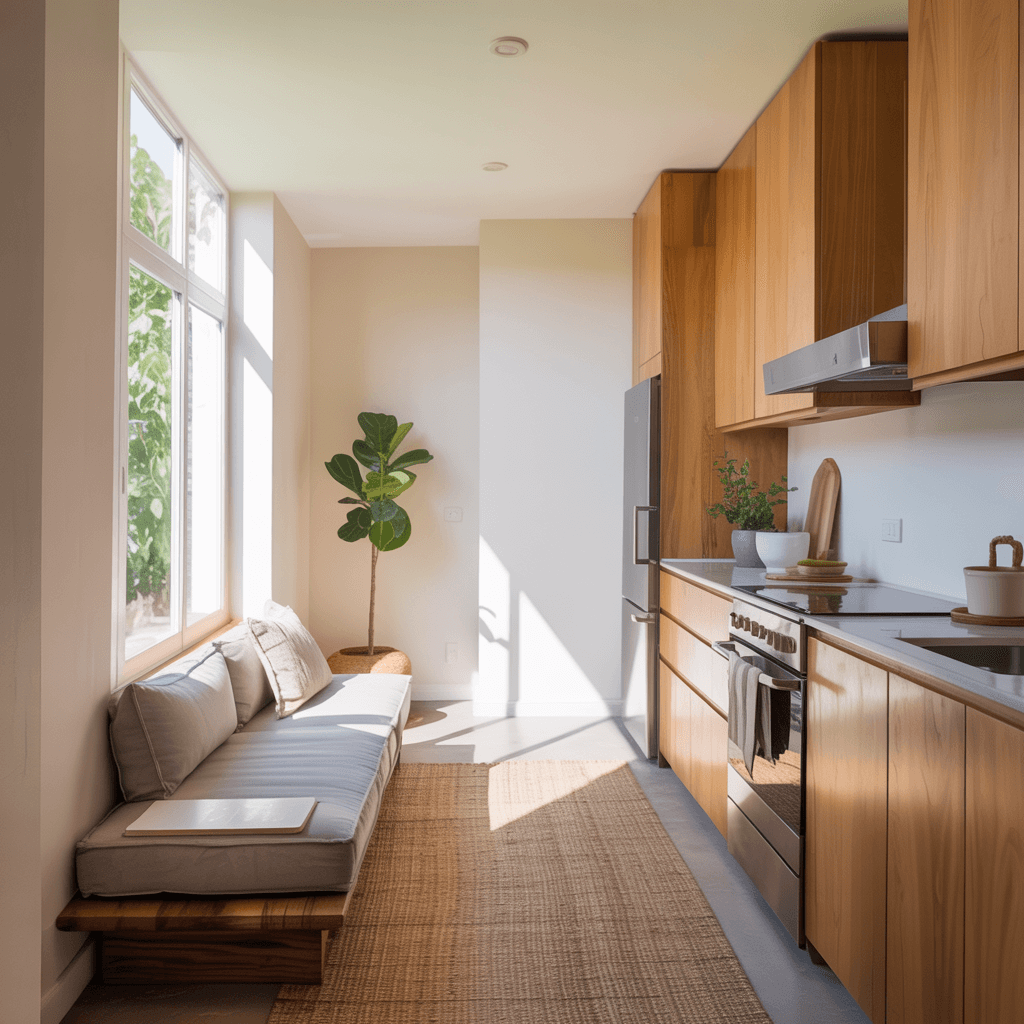
Small spaces benefit enormously from semi-open designs. Strategic partial separation makes tiny areas feel larger while maintaining functionality. My 600-square-foot apartment feels twice as big since I created semi-open zones.
The secret lies in multipurpose elements. My kitchen peninsula is only 30 inches wide but provides prep space, storage, seating, and separation. Every element works overtime, and nothing exists just for looks.
Small space semi-open tricks:
- Transparent or translucent dividers maintain light flow
- Furniture on wheels for flexibility
- Vertical storage solutions everywhere
- Light colors to maximize brightness
- Mirrors to create illusion of space
Living small taught me that less really can be more. When every item must earn its place, you naturally curate a better life.
Also Read: 15 Creative Half Open Kitchen and Living Room Ideas to
Rustic Semi Open Kitchen and Living Room Combo
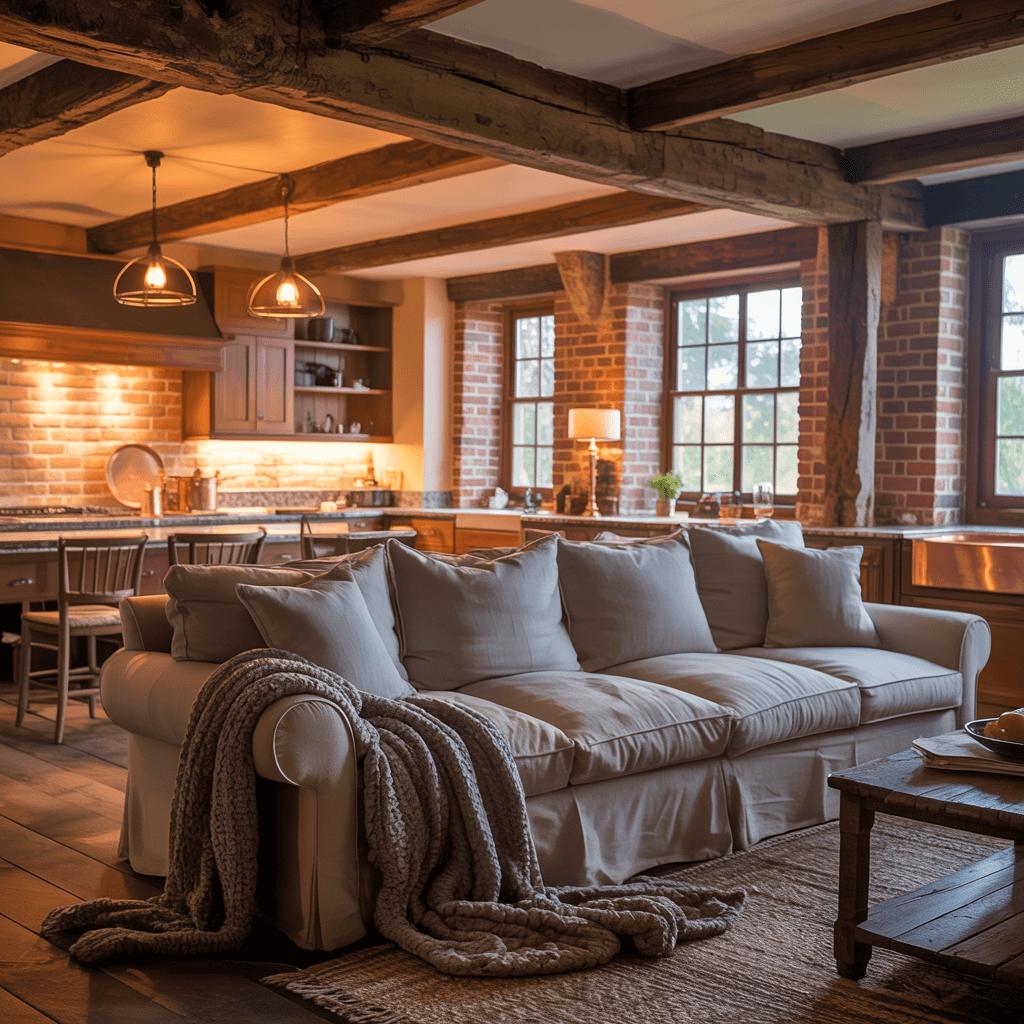
Rustic design brings soul to semi-open layouts. Natural materials and lived-in textures create warmth that modern minimalism can’t touch. I helped my sister design her rustic semi-open space, and now it’s everyone’s favorite hangout spot.
We used reclaimed barn wood for the dividing element – a partial wall topped with thick wooden shelves. The imperfections in the wood tell stories, and the natural variation adds visual interest that planned perfection can’t replicate.
Rustic elements that work:
- Reclaimed materials with history
- Mixed metals (copper, iron, brass)
- Natural stone accents
- Vintage or antique fixtures
- Visible texture everywhere
The rustic approach gives permission for imperfection. That scratch in the wood? Character. The uneven stain? Authenticity. It’s liberating, honestly.
Semi Open Layout with Multi-Functional Island
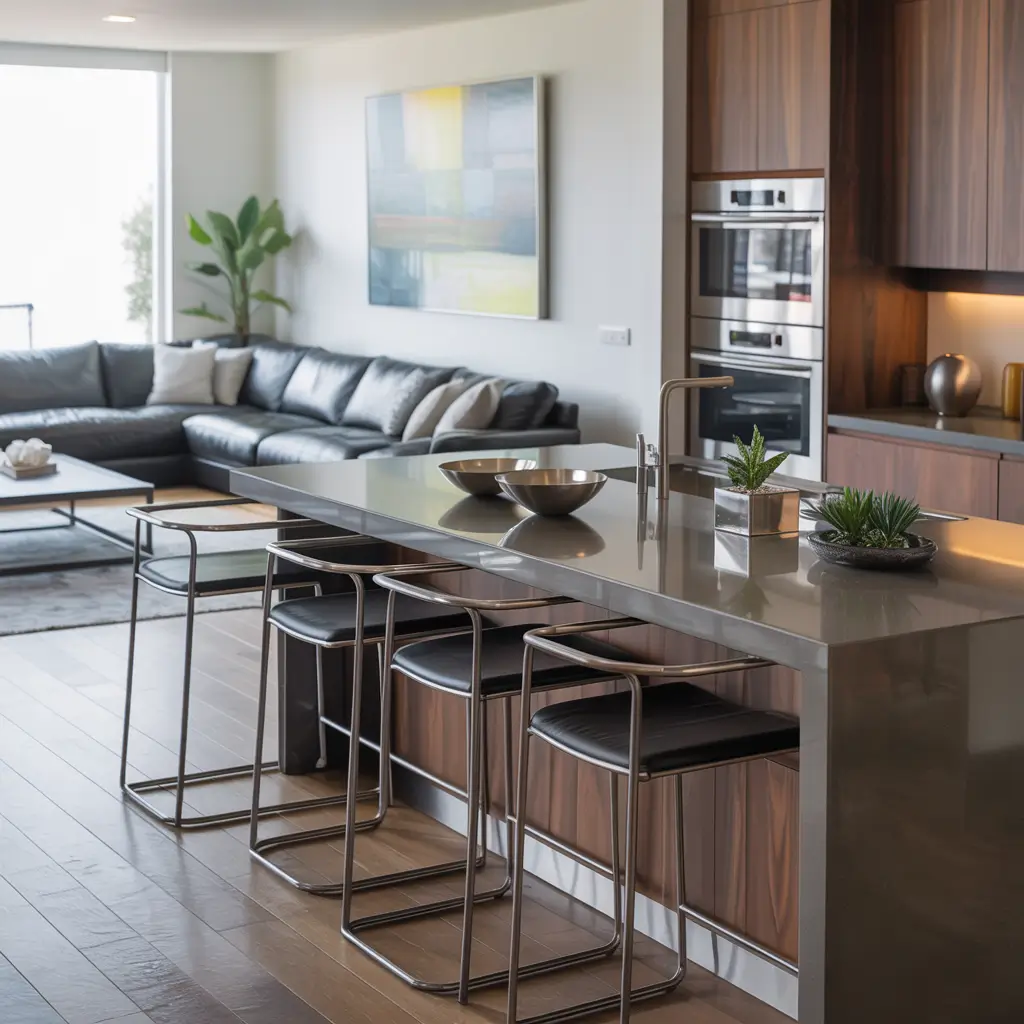
Multi-functional islands are the command centers of semi-open kitchens. They cook, store, seat, serve, and separate – basically the overachievers of kitchen furniture. My island does everything but pay rent, and honestly, it probably should.
The design incorporates a cooktop with downdraft ventilation (no hood blocking views), dishwasher on one side, wine fridge on the other, and seating for four. The varying heights create visual interest while defining different zones for different functions.
Island features worth including:
- Different height levels for various tasks
- Storage accessible from multiple sides
- Built-in appliances where possible
- Charging stations for devices
- Quality castors if mobility needed
My island investment seemed crazy at first, but it’s become the most-used piece in my entire home. Everything happens there – cooking, eating, working, socializing.
Contemporary Semi Open Kitchen with Lighting Accents
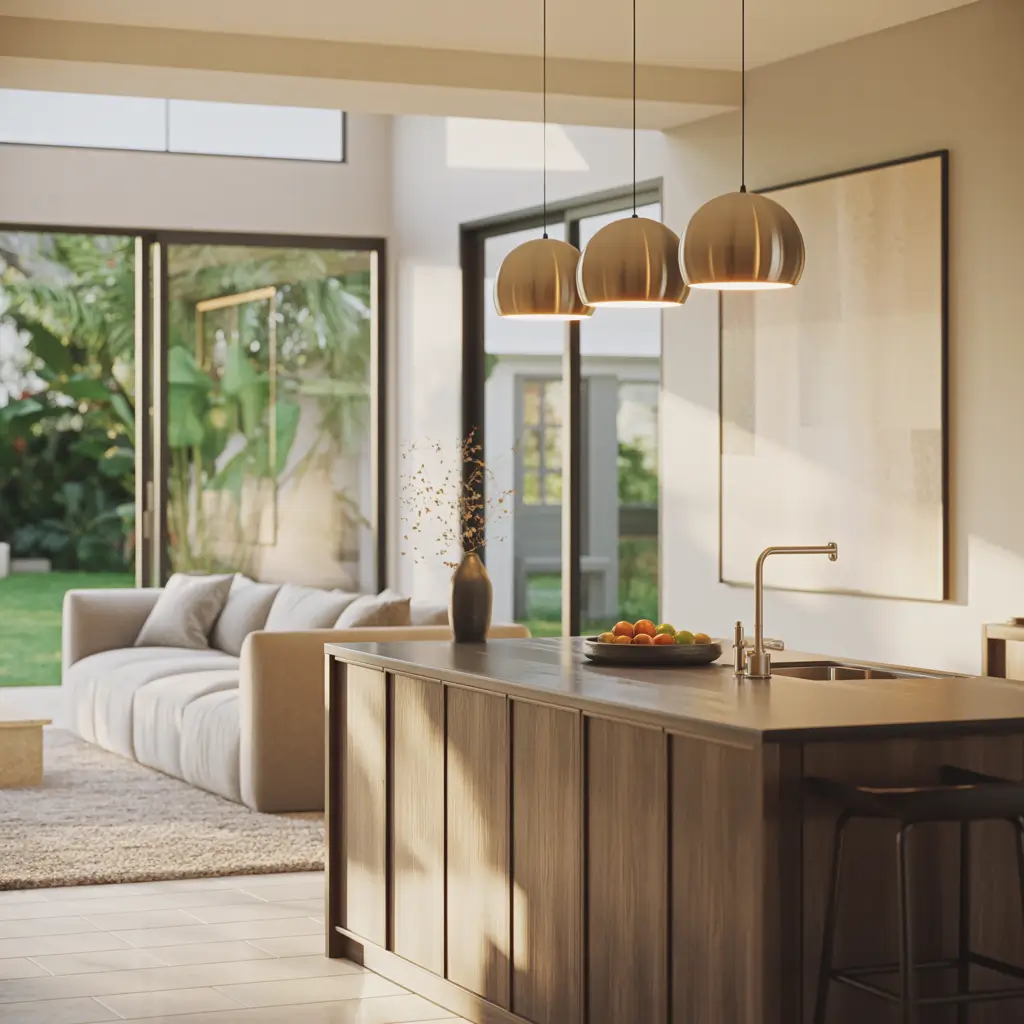
Lighting transforms semi-open spaces from functional to magical. Strategic illumination defines zones while creating ambiance that changes with your needs. I spent more on lighting than countertops, and I’d do it again without hesitation.
My setup includes pendant lights over the island, LED strips under cabinets, accent lights highlighting the divider element, and smart bulbs everywhere for scene control. Each zone has independent control, allowing infinite combinations for different moods and activities.
Contemporary lighting strategies:
- Layer different light types for versatility
- Use lighting to define zones
- Install dimmers on everything
- Consider color-changing options
- Hide sources when possible for cleaner look
The lighting became my secret weapon for parties. Bright for cooking, dimmed for dining, colored for late-night dance parties (yes, in my kitchen).
Semi Open Kitchen with Frosted Glass Partition
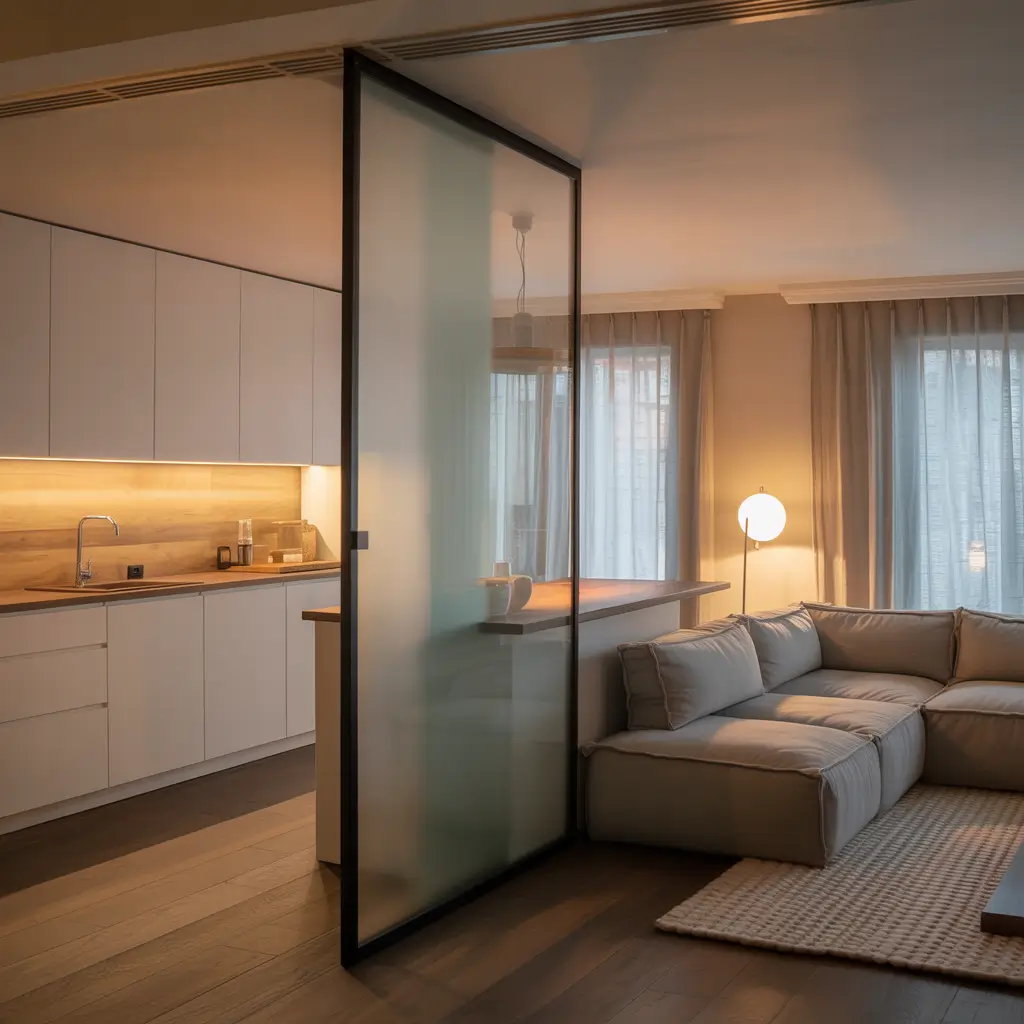
Frosted glass offers privacy without darkness. These translucent barriers hide mess while maintaining brightness and connection. After my clear glass showed every fingerprint and splash, frosted became my salvation.
The frosting patterns add design interest – from simple gradients to elaborate etched designs. Mine features a gradient that’s clear at the top and fully frosted at counter level, hiding prep chaos while maintaining sight lines.
Frosted glass benefits:
- More forgiving than clear glass
- Diffuses harsh light beautifully
- Available in various opacity levels
- Can be partially frosted for interest
- Creates flattering, soft lighting
The frosted glass made my kitchen feel like a high-end restaurant where mysterious culinary magic happens behind translucent screens. Reality: I’m just making tacos, but the mystique is nice :/
Scandinavian Style Semi Open Living and Kitchen

Scandinavian design masters the art of cozy openness. Light, natural materials create warm, inviting spaces that feel both connected and defined. After a Copenhagen trip, I came home determined to hygge-fy my semi-open layout.
The Scandinavian approach uses subtle transitions – maybe a change from white walls to light gray, or wood floors to hexagonal tiles. The divider might be a simple white peninsula with light oak accents. Everything whispers rather than shouts.
Scandinavian semi-open principles:
- Natural light maximization above all
- Light woods and white dominance
- Minimal but meaningful decoration
- Textiles for warmth and softness
- Function-first design philosophy
My Scandi remake taught me that calm spaces create calm minds. The visual quiet of the design actually makes me cook more and stress less.
Semi Open Kitchen with Smart Storage Solutions

Smart storage makes semi-open layouts work for real life. Hidden organization systems keep both spaces clutter-free while maintaining the aesthetic appeal. My storage solutions hide enough stuff to stock a small restaurant, but you’d never know it.
Every surface does double duty. The room divider incorporates pull-out pantries. The peninsula has drawers on both sides. Even the toe kicks hide shallow drawers for flat items. It’s organizational Tetris at its finest.
Smart storage innovations:
- Toe-kick drawers for baking sheets
- Pull-out pantries in narrow spaces
- Appliance garages with lift doors
- Rotating corner units
- Ceiling-mounted systems that retract
IMO, good storage is the difference between a semi-open kitchen that works and one that just looks good in photos.
Making Semi-Open Layouts Work for Real Life
These fifteen ideas prove that semi-open kitchens offer the perfect middle ground between complete openness and traditional closed layouts.
You get the benefits of connection without sacrificing functionality or privacy.
My journey from closed to open to semi-open taught me that the best layout is one that honestly reflects how you live. Maybe you need flexibility for different situations, or perhaps you want permanent but partial separation.
The beauty of semi-open design lies in its adaptability to your specific needs.
Remember, the perfect semi-open kitchen doesn’t just look good – it makes your daily life better.
Whether you choose sliding panels for ultimate flexibility or a plant wall for living art, make sure your choice solves actual problems, not just aesthetic ones.
Start by honestly assessing your pain points. Cooking smells? Glass partitions. Need more storage? Multi-functional island. Want flexibility? Sliding panels.
The key is matching solutions to real needs, not just copying pretty pictures.
Your semi-open kitchen should enhance both cooking and living, creating a space where meal prep doesn’t mean isolation and relaxation doesn’t mean dealing with kitchen mess.
Now stop scrolling through inspiration photos and start planning your perfect balance. Trust me, once you nail that sweet spot between open and closed, you’ll wonder why anyone chooses the extremes.











